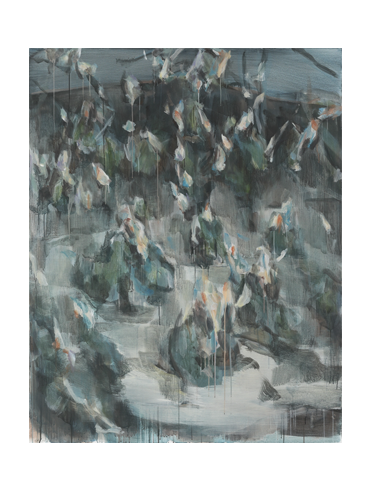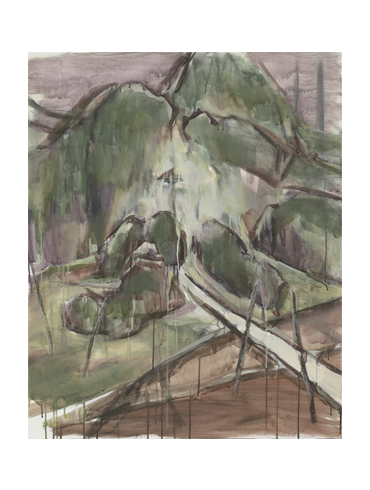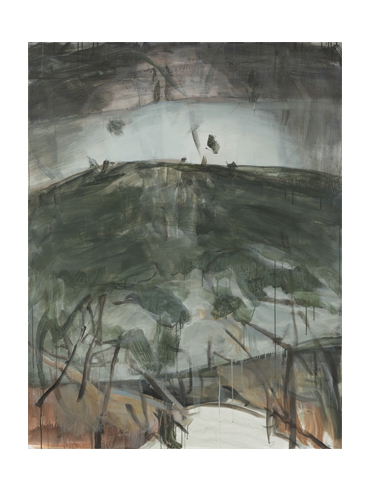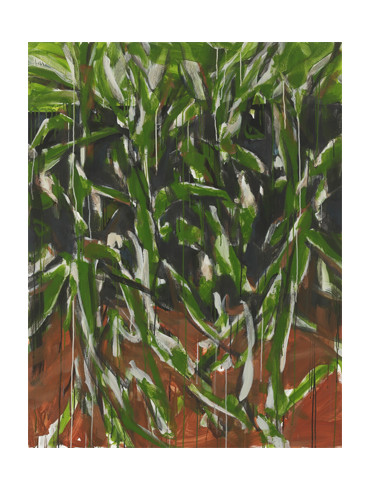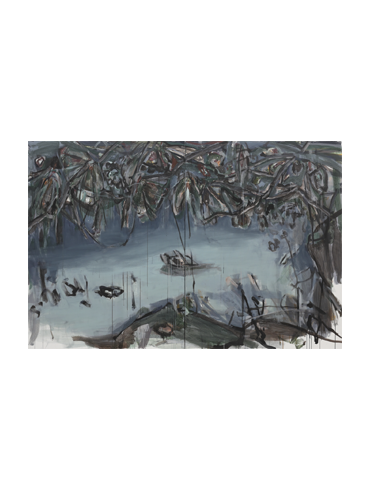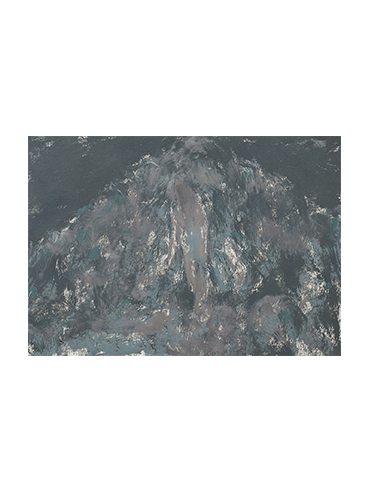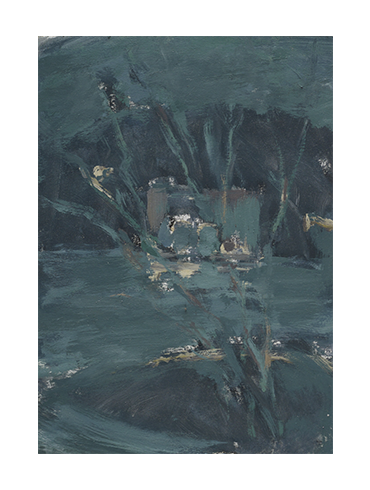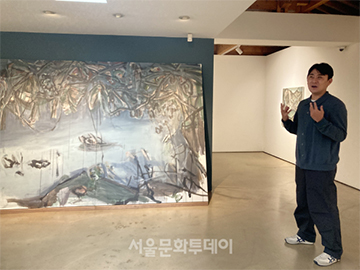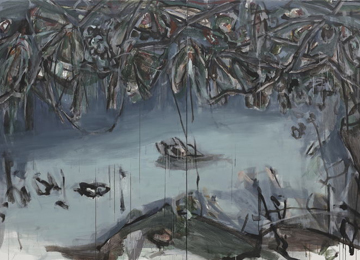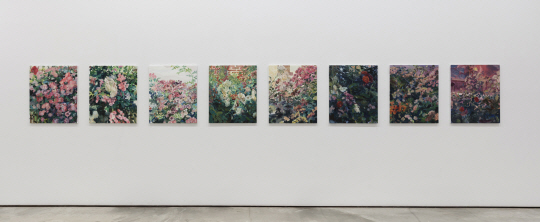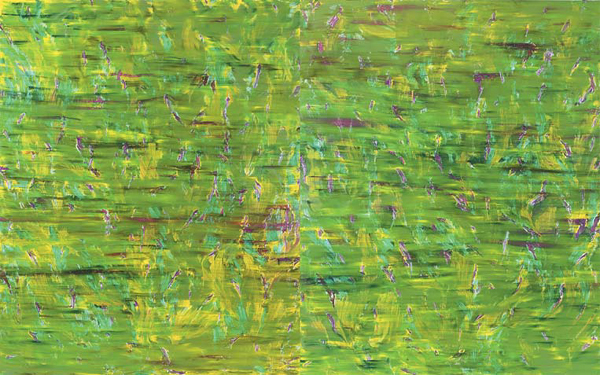빛, 색채, 온도, 습도, 바람과 냄새까지. 풍경이란 막을 가르고 내부로 향하는 작가의 모습을 떠올려보라. 조르주 디디-위베르만은 제임스 터렐의 작가론을 현상학적 걷기의 수행으로 해석한다. 자연 현상은 기본적으로 신화적 서사로 이뤄진 말의 의미를 전달하던 상징적 매체였다. 그러나 풍경은 말을 잃어버린 자연과 같다. 문명은 야생성을 하나씩 점령해 나가면서 자연의 목소리를 지우고 있다. 장재민은 풍경 속으로 진입하여 낯선 장소를 헤맨다. 목적지 없이 헤매는 것이 목적이다.
「중간태의 풍경」 中 발췌 | 정현 · 미술비평가, 인하대학교 교수
장재민의 회화는 폭우가 잦아드는 순간의 고요 같다. 습윤한 공기를 걷어내고, 대상을 향해 나아가는 시선의 움직임을 떠올린다. 매 순간 방향을 달리하며 끈질기게 응시하는 눈. 사라지는 감각의 흔적을 포착하려는 고집이다. 그의 회화는 그림이라기보다 그리기다. 화면은 끝맺음을 명시하지 않으며, 신체적 율동의 흔적을 적극적으로 수용한다. 몸의 거름망을 거친 풍경은 새로운 질서로 정돈된다. 원근이 뒤섞이고, 형상은 어스러진다. 대상과의 물리적, 심리적 거리가 끊임없이 재조정된다. 하나의 정체를 추적할 때마다 미지의 공백이 고개를 든다. 소란한 붓질로 채운 화면은 이내 적막해진다. 이곳은 잔상이 원본보다 선명하게 기억되는 세계다.
「낯선 중력의 세계」 中 발췌 | 박미란 · 큐레이터, 학고재 기획실장







